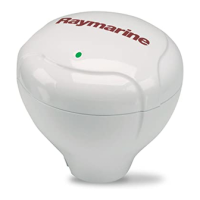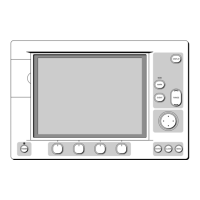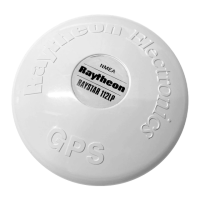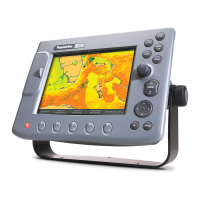Chapter 5: Operation 47
Chapter 5: Operation
5.1 Introduction
This chapter explains how to use the chart functions to navigate with the
RC4300.
5.2 Working with Waypoints
The RC400 enables you to place up to 500 waypoints. A waypoint is a
position entered on a chart as a reference or destination point. All
waypoints placed on the chartplotter are stored in a waypoint database list
which includes symbol, position, bearing, range, date and time.
All waypoints in the database are displayed on screen, unless the SHOW
WAYPOINTS is set to OFF in the Chart Set Up menu, as described on page
40. A waypoint can be selected, either on-screen or from the list, for
editing.
Waypoints can be placed either using the cursor, or at the vessel’s
position, or at a specific lat./long. Waypoints can also be placed before
the chartplotter is installed on your vessel.
When a new waypoint is placed, it is displayed using either the default
symbol of a cross or an alternative symbol available from the Chart Set
Up menu, as described in Chapter 4. The waypoint is added to the
waypoint list and named with the next available number.
The edit functions can be used to change the symbol and name. When the
cursor is positioned over a waypoint, the waypoint bearing and range are
displayed.
Waypoints can also be transferred between the chartplotter, other NMEA
connected instruments or a PC, using the Waypoint Transfer functions.
This section explains how to perform the following tasks using the on-
screen cursor and the waypoint list:
• Placing a Waypoint
• Selecting a Waypoint
• Displaying Waypoint data
• Editing a Waypoint (symbol, name & position)
• Erasing a Waypoint
• Moving a Waypoint
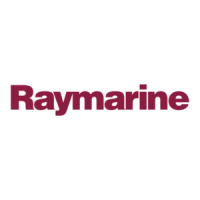
